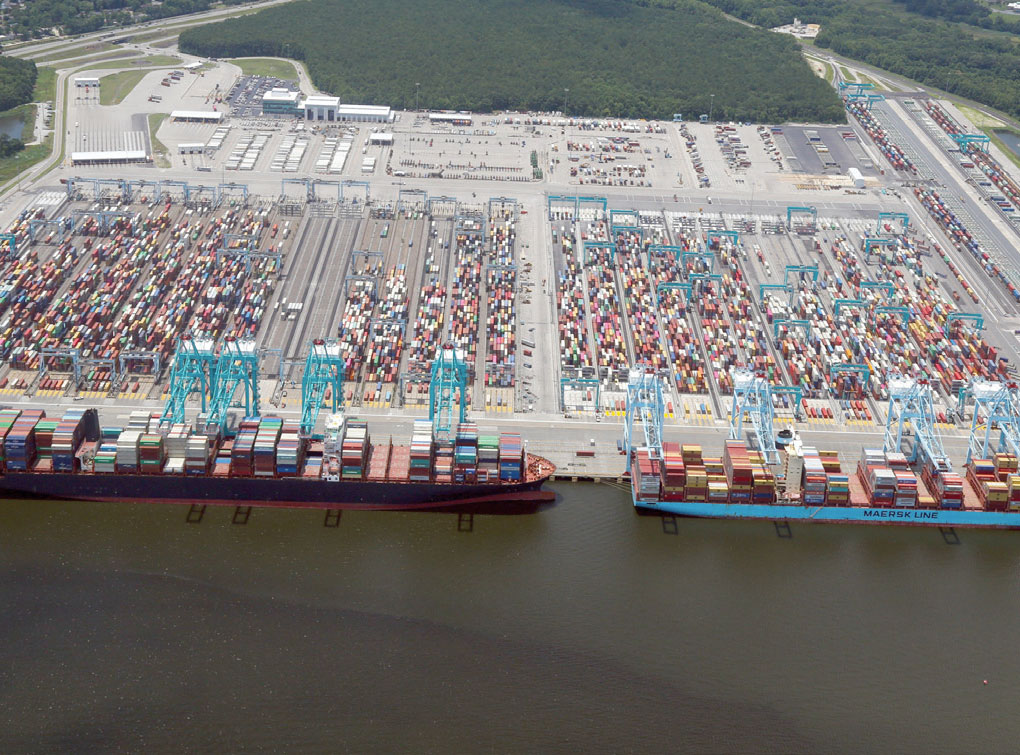Page 1: Barging Burgeoning
Page 2: Terminals Expanding
Page 3: Offshore Wind Coming
Page 4: Channel Work Beginning
Page 5: ‘Competitive as All Get-Out’
Terminals Expanding
That federal grant, while important, is small change compared with the $320 million spent over the course of three years to double capacity of the Virginia International Gateway in Portsmouth. The VIG project, completed last fall, realizes full benefits of a contingent of eight super-post-Panamax ship-to-shore cranes and 56 rail-mounted gantries, or RMGs, as well as enhanced rail and gate infrastructure, at a facility accommodating container vessels with capacities of more than 14,000 TEUs – the largest boxships to call the U.S. East Coast.

Three ultralarge container berths also are already available along 50-foot-deep water at Norfolk International Terminals, where expansion is on target for completion in fall 2020, with additional RMGs and container stacks incrementally coming online through spring and summer, to ultimately support 30 semiautomated stacks at NIT.
“We’ve got the capacity at NIT and VIG to a point where we’re operating in a very comfortable place,” Reinhart said.
“One of the things I’ve been very pleased about is that our operational efficiency has been so solid that we’ve been able to scale back our hours and still have adequate capacity for the motor carriers,” he said, noting the weekday terminal opening time has been moved to 6 a.m. from 5 a.m., plus terminals no longer are opening for a half a day on Saturdays. Two years ago, he said, terminals opened as early at 1 a.m.
“Talk about operational efficiency,” Reinhart said, also citing a shift to all-electric power from diesel. “We use less energy. We’re more resilient. We’re more sustainable.”
He said the terminals are consistently delivering 30-minute turn times for single moves by trucks.
“We really have a fluid capacity,” Reinhart said. “We’re still only utilizing about 60 percent of the slots that we have available in our reservation system, because we’ve become so efficient.”






